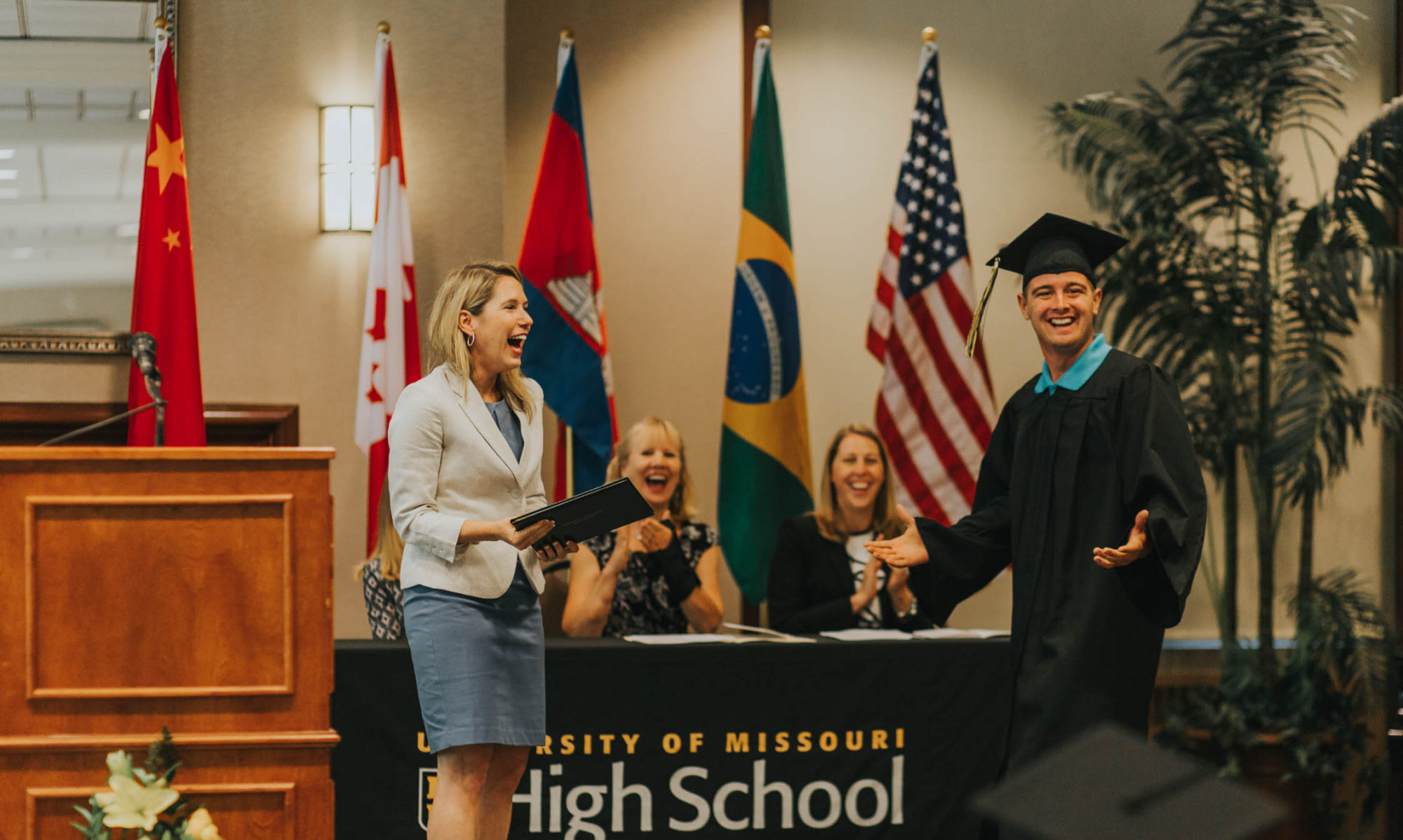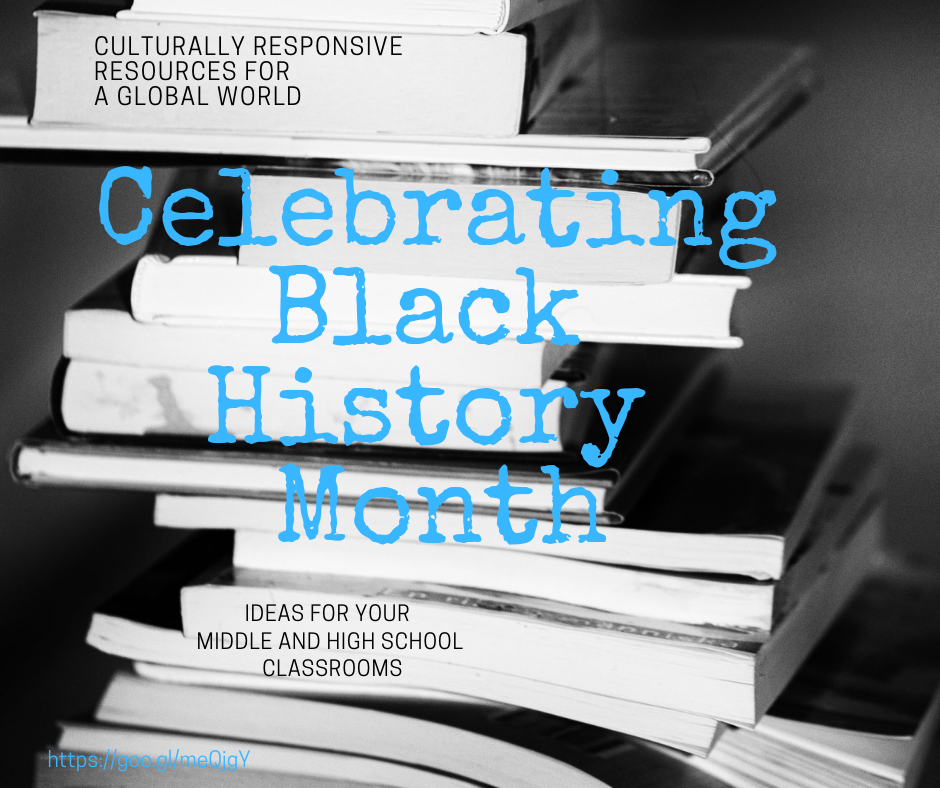“What are we doing for Black History Month?”
One of our classroom partners asked us this question and it is an important one. While Culturally Responsive Teachers honor and affirm their students’ cultures every day; there is a long social justice tradition of intentionally making space and time to celebrate and affirm specific marginalized populations.
For more information about the historical origins of Black History Month check out this student-friendly article.
In our own classrooms, we have found that Black History Month is a rich opportunity to foster dialogues about representation, justice, and equity. Further there are so many interdisciplinary connections to draw on.
So, what are we doing for Black History Month?
Below are a few activities and resources we encourage you to use to celebrate Black History Month in the High School and Middle School classroom. Feel free to add more ideas to the comments below.
Language Arts and Social Studies
- Professional Meet and Greet. “Invite” famous African Americans to a professional meet-and-greet. Prepare a list of invitees and ask students to draw one of these names, conduct independent research, create a business card on their person, and then introduce themselves as that person at your professional meet-and-greet.
- Here is an incomplete list of people you might include: Benjamin Banneker, Phillis Wheatley, Sojourner Truth, Frederick Douglass, Harriet Tubman, Booker T. Washington, George Washington Carver, W.E.B. DuBois, Langston Hughes, Satchel Paige, Thurgood Marshall, Jesse Owens, Rosa Parks, Ruby Bridges, Jackie Robinson, James Baldwin, Malcolm X, Martin Luther King Jr., Coretta Scott King, Maya Angelou, Toni Morrison, Tina Turner, Maulana Karenga, Mae Jemison, Muhammad Ali, Angela Davis, Zora Neale Hurston, Condoleezza Rice, Oprah Winfrey, and Barack Obama.
- Compare and Contrast the messages and theories of W.E.B. DuBois and Booker T. Washington. You can even host a mock debate between these two famous thinkers. Include plenty of time to debrief how context may have contributed to their philosophies.
- Literature Studies. Here is an incomplete list of writers you might include in your literature studies for Black History Month: Phillis Wheatley, Langston Hughes, James Baldwin, Arna Bontemps, Maya Angelou, Toni Morrison, Lorraine Hansberry, Richard Wright, Alex Haley, Countee Cullen, James Weldon Johnson, LeRoi Jones (Amiri Baraka), Mari Evans, Nikki Giovanni, Gwendolyn Brooks, Sonia Sanchez, Ralph Ellison, Angela Davis, and Zora Neale Hurston.
- Record a Reader’s Theater on Angelou’s, “On the Pulse of this Morning.”
- Hold a Socratic Seminar around Dr. King’s Blueprint.
Science and Mathematics
- Host a Hidden Figures watch party and discussion.
- Journey’s in Film has created a free curriculum around this film, which illuminated the contributions of Katherine Johnson, Dorothy Vaughan, and Mary Jackson, along with many other men and women who worked behind the scenes to advance the US space program.
- Organize a mock science fair: Have each student present on the works of an African-American scientist or inventor. Here’s another short (and incomplete) list of potential people to get you started: Washington Carver, Neil deGrasse Tyson, Thomas L. Jennings, Mark E. Dean, Madam C. J. Walker, Dr. Shirley Jackson, Charles Richard Drew, Marie Van Brittan Brown, George Carruthers, Dr. Patricia Bath, Jan Ernst Matzeliger, Alexander Miles.
Music and Arts
- Organize a research concert
- Working in pairs, ask students to research an important song from the list below (or one that you provide) and then present their findings along with the song to the rest of the class. Below are some possible songs and artists for your research concert:
- Formative songs/performers of jazz, blues, and rock-and-roll include:
- “Maple Leaf Rag” by Scott Joplin
- “Strange Fruit” by Billie Holiday
- “Take the ‘A’ Train” by Duke Ellington
- “Hound Dog” by Big Mama Thornton (and by Elvis Presley)
- “How High the Moon” by Ella Fitzgerald
- “Hello Dolly” by Louis Armstrong
- “Respect” by Aretha Franklin
- “I Got You (I Feel Good)” by James Brown
- “I Got a Woman” by Ray Charles
- “The Christmas Song” by Nat King Cole
- “The Star-Spangled Banner,” performed by Jimi Hendrix
- “How Blue Can You Get” by B.B. King
- “Kind of Blue” by Miles Davis
- “What’s Going On?” by Marvin Gaye
- Other important musicians include: Thelonious Monk, Cab Calloway, Josephine Baker (dancer), Fats Waller, Berry Gordy (producer), Smokey Robinson, Diana Ross, The Temptations, Lionel Richie, The Jackson Five, The Commodores, Chuck Berry, Little Richard, Stevie Wonder, Dizzy Gillespie, Charlie Parker
- The National Library of Congress is a great resource for Spirituals and Gospel songs from the African American tradition: https://www.loc.gov/item/ihas.200197495/
- Extension Options:
- Research the traditional blues song template; challenge students to write their own blues song lyrics.
- Challenge students to identify common themes across the songs at your research concert. Why might these themes have emerged across this work?
- Formative songs/performers of jazz, blues, and rock-and-roll include:
- Working in pairs, ask students to research an important song from the list below (or one that you provide) and then present their findings along with the song to the rest of the class. Below are some possible songs and artists for your research concert:
An Interdisciplinary Harlem Renaissance Project
- In small groups, assign students different facets of the society and culture of the Harlem Renaissance. In teams, students can prepare a 5-8-minute presentation based on their topic. The presentation should include a demonstration of the topic (i.e. actual food, recorded music, artwork, etc.) Students will need a few days to research and prepare their demonstration.
- Optional Extension: Ask students to individually prepare an analysis of their particular cultural facet, analyzing the characteristics and impact(s).
- Potential topics include:
- Food – Research popular dishes of the time and place. What is involved in the making of the dish? What is the recipe? What is the reason it’s a popular dish? What is its significance? Was it new to the time period, a rendition, or an old favorite? Does it represent something (Hint: perhaps watch clips from the movie “Soul Food” for some ideas.)
- Music – Research the musical trends at the time, particularly focusing on the jazz movements, including ragtime, hot fives, and sevens, Tin Pan Alley. What does it mean? What are its influences and its current offshoots? Who are the popular musicians of the time? Why? Where is the music happening?
- Dance – What are the popular forms of dance at the time? Are they new? If so, how were they invented? What are the dance clubs at the time, and what are they like? Who are the popular dance performers at the time?
- Art – What sculpture, drawing or painting techniques are most often used? What are some new techniques being tried out? What are some of the famous works of the time? What are the themes? Who are the popular artists? Why?
- Theatre – Who are the stage actors that are making it big? What plays are being produced/written? What are they about? Who are the big directors? What theaters (buildings) are famous and why?
- Cinema – Who are the screen actors that begin to make it big? What movies are being produced/written? What are they about? Who are the big directors? How does cinema play a part?
- History – What are some of the famous speeches being made? Who are the leaders of the movement politically? Of the country? What’s going on in the world during this time period? What is the social status and overall feeling? What are the warring groups of the time, and what are their main issues?
- Literature – What types of literature are being written, and by whom? What major themes are being discussed? Compare and contrast the literature being produced by writers in the Harlem Renaissance and the popular mainstream literature of the time.
Want more ideas?
- The National Education Association has a list of Black History Month lesson plans and activities for high school and middle school.
- Teaching Tolerance also has a catalog of free resources for Black History Month. You can find them here.
- Additional artists you might study: Archibald J. Motley, Jacob Lawrence, William H. Johnson, Palmer Hayden, Lois Mailou Jones, Aaron Douglas, Gwendolyn Bennett, and Augusta Savage
How do you celebrate Black History Month in your classes? We’d love to hear about it! Leave a comment below.
______________________________________________

